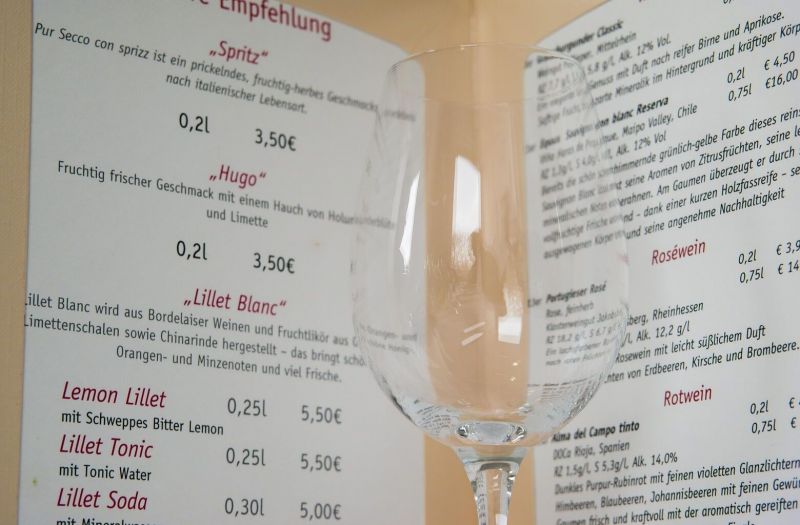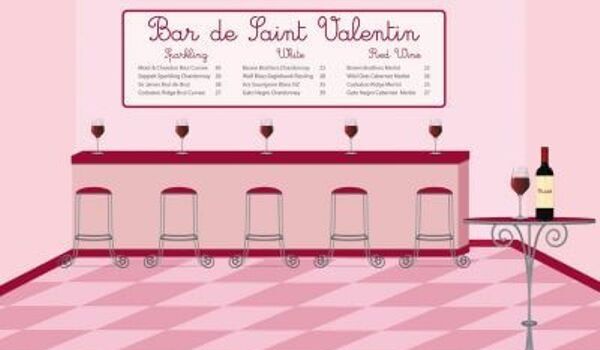Educating Sommeliers Worldwide.
By Beverage Trade Network

Getting the pricing strategy right for your wine list is absolutely vital for the long-term success of your restaurant. By now, we’ve all heard stories about Michelin-starred restaurants in cities like New York that almost went out of business just because they couldn’t sell enough wine. It’s important to get the pricing right – if the wine is priced too high, you won’t sell enough wine and if the wine is priced too low, you won’t sell enough high-margin wine.
Thus, the first thing that you will need to do is develop an overall pricing strategy. In many ways, this is determined by the reputation and brand image of your restaurant. For example, if you are a fast-casual dining establishment, you are limited in how much you can charge for a glass or bottle of wine. And if you want to be known as a midweek restaurant spot offering high-quality wines available to customers at very attractive prices, you also lose some of your flexibility. You may want to charge a higher price, but by doing so, you might be losing some of your core clientele.
When it comes to overall strategy, you will need to consider both your wine by the bottle program and your wine by the glass program. As a rule of thumb, the only wines appearing on your by the glass program should be those that you are very confident about selling. For that reason, most restaurants skew heavily in favour of popular red wines like Cabernet Sauvignon and popular white wines like Chardonnay.
That basic strategy might work for a “neighbourhood” or fast casual restaurant, but will not work for a high-end restaurant where there is much more of an emphasis on food-wine pairings. For example, in addition to a house Chardonnay and a mid-priced Chardonnay, you will be expected to offer other white wines in your by the glass program, such as Pinot Grigio. The good news is that, as a national trend, there has been a renewed emphasis on shorter, pared-down wine lists. That has made pricing much easier, simply because the whole process of ordering and replenishing wine is simpler. Moreover, all of the “hidden” costs of a wine program – such as the relatively high cost of storage – are reduced with fewer wines on the wine list.

The industry standard is to mark up a bottle of wine 200-300% over its retail sales price. Thus, if a high-end wine retails for $20 at a wine retail store, it is likely to sell for $60 to $80 at a restaurant. For rare, expensive or speciality wines, the markups could be as high as 400%. This pricing strategy helps to build in the types of margins that you will likely require in order to be financially successful. It also helps to explain why most restaurant wine lists start with wines at around $30 per bottle. If you do the math – that works out to a $10 bottle of wine at retail, which is just about the lowest price you’ll find for a bottle of domestic wine in many New York City wine shops.
When it comes to wine by the glass, there are also industry standards for developing a pricing strategy. One standard, for example, is simply to price a single glass of wine at the wholesale cost of the bottle. In other words, if you managed to purchase a case of wine from your supplier at an implied rate of $10 per bottle, then you should be pricing that wine by the glass at $10.
[[relatedPurchasesItems-61]]
Another pricing strategy requires a bit more calculation but is just as useful. For a standard 750 ml bottle of wine, calculate (on average) how many pours you make for that bottle. For most restaurants, that works out to a number between 4 (on the generous side) and 6 (on the less generous side). So let’s assume an average of 6 pours per bottle. Simply divide the bottle price by the number of glasses to arrive at the appropriate price per glass. So, if you are selling the bottle for $60, that implies a per glass price of $10.
Thus, as you can see, you can arrive at the same price using two different methods. However, what this does not take into account is the fact that you might not actually sell 6 glasses of that wine after you open the bottle. Even with state-of-the-art wine preservation techniques, you can’t expect an opened bottle to last for a long period of time! Thus, if you are opening up a lot of bottles and not finishing them, you may need to raise your pricing accordingly. That is why the second methodology, albeit more complex, is actually more effective in making sure that you make a profit. IF you are only getting 5 pours from a bottle, you should be pricing that glass of wine at $12, and not $10. And, if you are only finishing half the bottle (i.e. 3 pours), then you need to be charging $20 per glass!
You can immediately see that the pricing can get out of control if your wines by the glass are not selling quickly. There are different industry benchmarks for wine by the glass programs. In large, metropolitan markets like New York and San Francisco, the price per glass usually varies between $8 and $15. High-end restaurants with celebrity chefs (and celebrity sommeliers!) may have by the glass pricing that reaches into the $20, $25, or $30 range. Again, by doing the math, you can see that implies a bottle of wine that sells for anywhere from $125 to $200 per bottle!
When a bottle of wine is not selling at its originally anticipated rate, it’s a natural reaction to remove the wine from the wine list as soon as possible. In most cases, this occurs during the next rotation of the wine list 3 or 6 months later. By then, the thinking goes, there has been enough time to see that customers simply aren’t ordering a particular wine. Maybe you thought that customers wanted a sweeter wine option and added a Moscato to the wine list, but it never sold as planned. These things happen, after all.
But you don’t have to wait 3 or 6 months to make a change. Restaurants are surprisingly priced sensitive, and it might just be an issue that a bottle or glass of wine is priced too high. In that case, you might want to scale back the markup on the wine. For example, if you are charging a 300% markup over retail for a $20 bottle of wine, you might want to scale back the pricing from $80 per bottle to a number closer to $60 per bottle. Yes, you will be forgoing some of the margins, but any wine sale is still better than no wine sale. Some restaurants will go one step further, and actually lower the markups to just 100%. For a restaurant customer, this is going to be very enticing. It’s essentially a chance to get a $20 bottle of wine for just $40 at a restaurant. Maybe it’s not as affordable as bringing a bottle from home and paying a corkage fee, but it’s close!
And there’s one other little twist here, and that’s the fact that it could be the case that you are under-pricing your wines! In one survey done by Uncork’d, for example, the results seemed to show that restaurant wine drinkers preferred to drink more expensive red wines by the glass. Even though wines were priced at a range from $8 to $15, wine drinkers preferred wines priced from $11 to $15. There was even demand wines priced as high as $23 per glass! The numbers seemed to suggest that restaurant patrons were not so eager to drink $8 glasses of Cabernet Sauvignon.
So what can explain this phenomenon? One factor might be that wine drinkers, in general, are looking for the “total experience” when they dine out. They don’t necessarily want to drink the same wines at a restaurant that they drink at home. Thus, if they know that they can buy a bottle of Dark Horse Cabernet Sauvignon for $8-$10 at the local wine store, they might not be so eager to buy a single glass of Dark Horse for $10 when they dine out. Instead, they will likely want to try a different Cabernet Sauvignon from Napa Valley, just for the experience.
At the end of the day, wine pricing needs to be a dynamic, not a static, process. And data definitely needs to be used during the decision-making process. You can gather data from your POS, distributors, retailers, or online wine resources (such as Uncork’d). Since wines provide more profit than any food items on your food menu, you want to make absolutely certain that you are optimizing the profit potential of your wine program. Wine directors who are able to tap into their supply chain for special deals and discounts on the wine they are buying for their restaurant have an edge – every dollar they save when purchasing wine immediately gets added to the bottom line of the restaurant as soon as a bottle of wine is sold. By making adjustments on the fly, you will be well-positioned to keep your wine program running smoothly – and profitably.